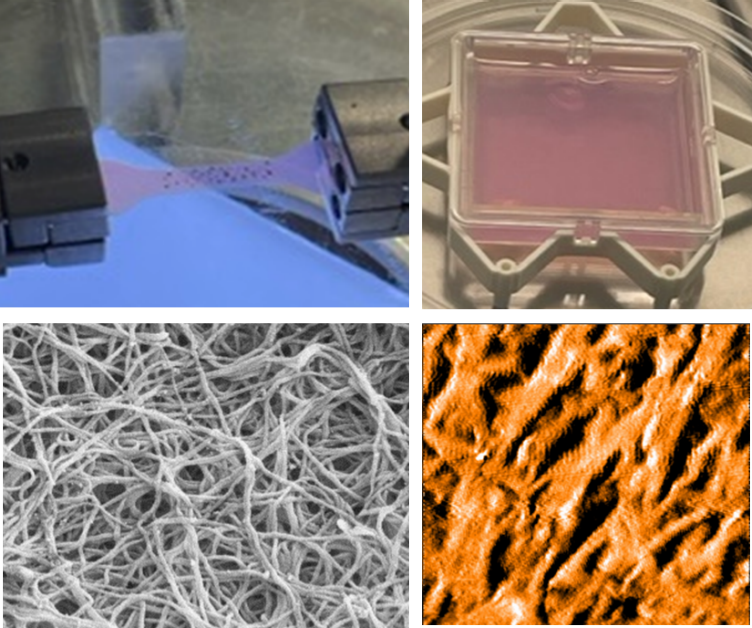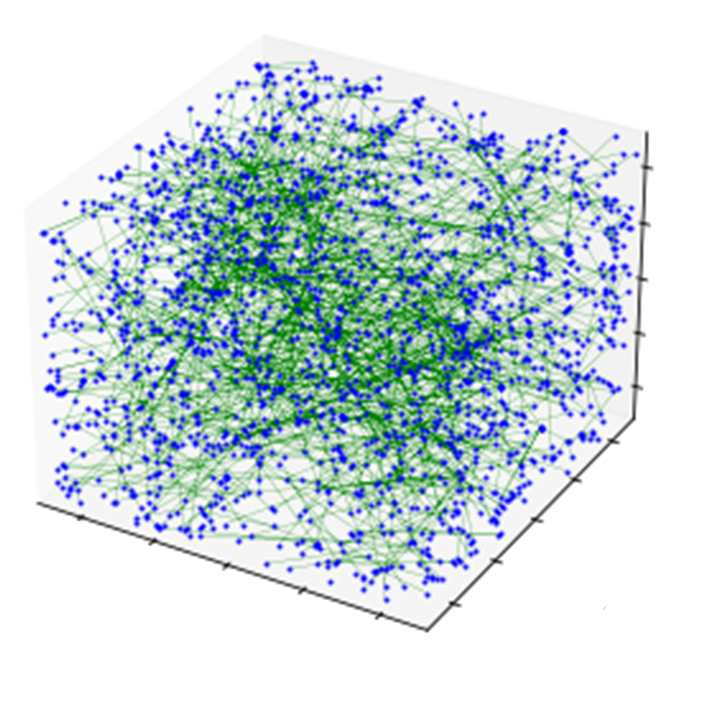Computational and Experimental Analysis of the Structure and Mechanics of Collagen Hydrogels
The project aims to gain further insights into the complex mechanical behavior of soft collagenous tissues across different length scales. It combines computational work with experiments to study the influence of microscopic network topology on the macroscopic mechanical behavior of the material.

We combine classical material tests with state-of-the-art methods e.g., atomic force microscopy and micro-indentation to characterize the mechanical behavior of collagenous materials. As in many engineering applications, we work with the simplest model, that still captures the essence of the actual system we aim to understand. In the case of this project a suitable model can be found in collagen hydrogels. The material is easily producible in our laboratory and shows a similarly complicated non-linear, anisotropic, time-dependent mechanical response as biological collagen tissues.

The focus of the project lies in using and further developing a computational framework to rationalize the experimental observations. Building on prior work of the group a hybrid continuum-discrete network model is applied to draw conclusions on what microstructural factors influence the macroscopic mechanical response, as well as to capture the time-dependent behavior and dive into fracture mechanics of collagenous network structures.
